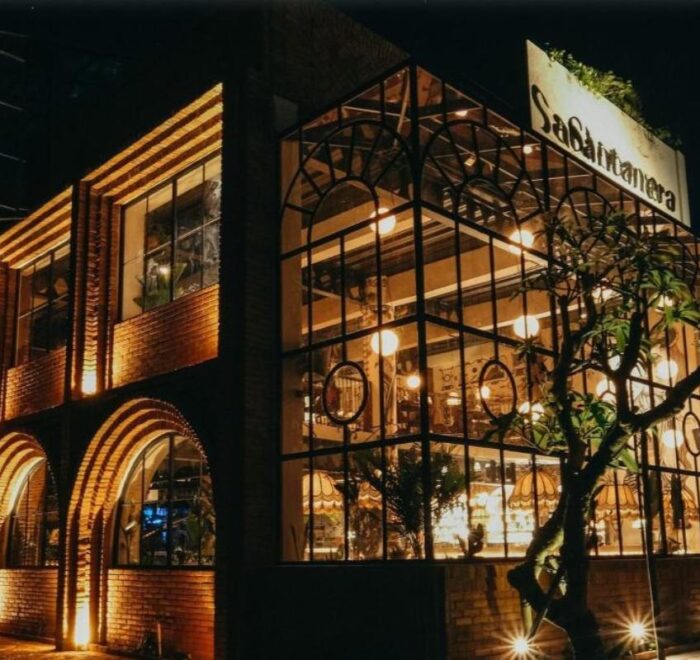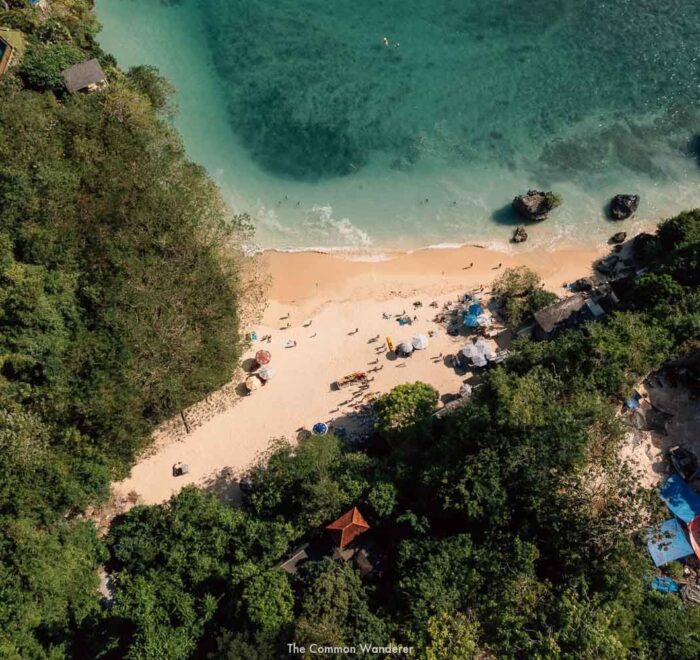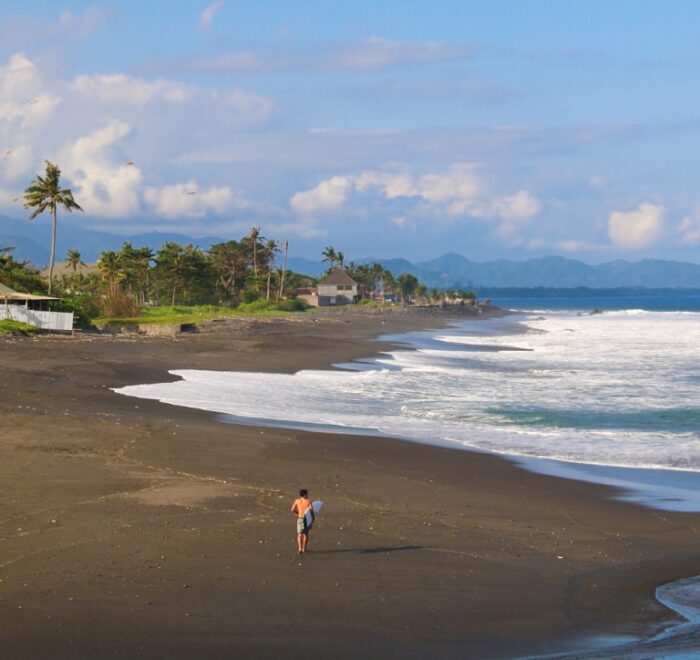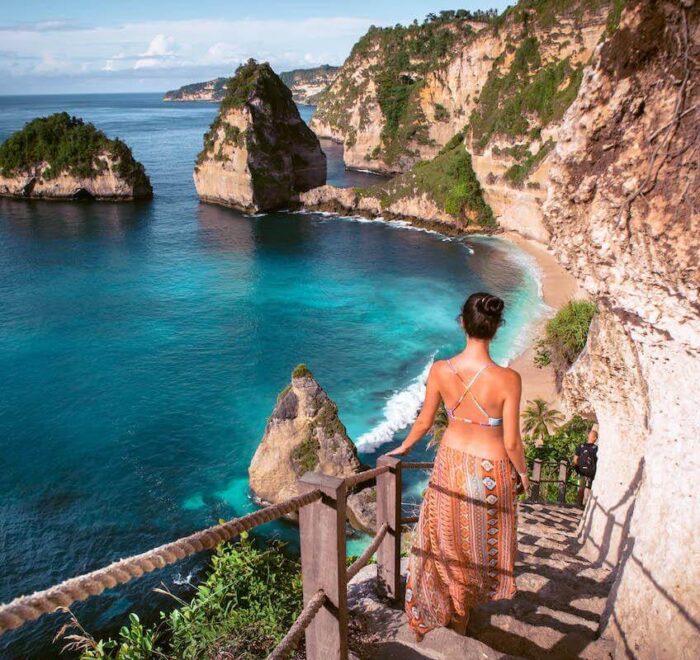Besakih Temple, known as the Mother Temple of Bali, is the largest and holiest temple of the many temples on the island. Located on the slopes of Mount Agung, it holds deep historical and spiritual significance for the Balinese people. This article explores its rich history, stunning architecture, and practical tips for visiting this sacred site.
Key Takeaways
- Besakih Temple, established by the holy sage Rsi Markandeya, is Bali’s oldest and most significant temple, symbolising the spiritual heart of the island with its rich history connected to Mount Agung.
- The temple complex features 23 temples, with Pura Penataran Agung being the largest and holiest, reflecting the Trimurti of Hinduism, while Pura Batu Madeg and Pura Ulun Kulkul add unique cultural significance.
- Visitors should respect the temple’s cultural etiquette, dress appropriately, and consider hiring a local guide for a deeper experience, while planning to explore its stunning architecture and participate in vibrant festivals.
The Sacred History of Besakih Temple

Source: besakih.org
The origins of Besakih Temple trace back to prehistoric times, making it one of the oldest and most significant temples in Bali. Legend has it that the holy sage Rsi Markandeya, who hailed from India, established the temple. Upon arriving in Bali, Rsi Markandeya instructed his followers to clear the forested area of Mount Agung’s slopes to build a small temple known as The Besakih Temple. This initial structure laid the foundation for what would become a grand complex over the centuries.
In the 15th century, Besakih Temple gained prominence and became a state temple under the Gelgel dynasty. Its significance continued to grow, and it was recognised as the main temple, central to the Gelgel and Klungkung courts. The temple’s history is deeply intertwined with Mount Agung, revered in Balinese culture as a representation of Mount Meru, the axis of the universe.
During the 1963 eruption, lava flows from Mount Agung miraculously spared the temple, an event viewed as divine protection. The resilience of Besakih Temple in the face of natural disasters like earthquakes and volcanic eruptions is seen as a testament to the enduring spirituality of the Balinese people.
This important temple serves as the primary Hindu temple in Bali, connecting all other Hindu temples on the island, and symbolises the grandeur of Bali’s mother temple, reflecting its paramount importance in Balinese culture.
Architectural Marvels of the Temple Complex

Source: Jesper Vestergaard
The Besakih Temple complex boasts architectural splendor that is truly awe-inspiring. Spread across six terraced levels that ascend the southwestern slopes of Mount Agung, the complex consists of 23 temples arranged on parallel ridges, inviting worshippers to ascend towards the heavens. Each temple within the complex is meticulously aligned along a single axis, symbolically guiding worshippers upwards on their spiritual journey.
Visitors are greeted at the entrance by the iconic split gateway, known as candi bentar, a hallmark of Balinese architecture. As you venture deeper into the complex, you’ll encounter the main shrine, which features a majestic Meru structure—a traditional Balinese temple spire that rises gracefully towards the sky. The central focus of the main sanctuary is the lotus throne, or padmasana, which serves as the ritual heart of the temple.
The design of Besakih Temple is not just about aesthetics; it draws worshippers into the spiritual core of the complex, creating an immersive experience that reflects the profound connection between the physical and spiritual realms. Each temple has its own shrines, contributing to a rich tapestry of worship that honours various deities and aspects of Balinese Hinduism.
Key Temples Within Besakih Temple Complex
The Besakih Temple complex is home to twenty-three temples, each with its own unique significance. Among these, three main temples stand out: Pura Penataran Agung, Pura Kiduling Kreteg, and Pura Batu Madeg. These temples represent the holy Trimurti and the Hindu trinity—Brahma, Vishnu, and Siwa—and serve as the primary sites of worship within the complex.
Here is a closer look at the significance and features of these key temples.
Pura Penataran Agung

Pura Penataran Agung is the largest and holiest temple within the Besakih complex, representing Siwa, the destroyer. This main pura penataran agung is not just a place of worship but a symbol of the seven layers of the universe, each layer represented through distinct areas within its structure. The intricate design and the spiritual symbolism embedded in its architecture of this holy place make it a focal point for devotees and visitors alike.
The lotus throne, or padmasana, lies at the heart of Pura Penataran Agung and serves as the primary ritual focus. This sacred throne is where the most significant ceremonies and rituals are conducted in this working temple, drawing worshippers from across Bali and beyond to partake in the spiritual energy of the site.
Pura Batu Madeg

Source: purabesakih.id
Pura Batu Madeg, representing Vishnu, is another key temple in the pura besakih complex. This temple is historically revered for its central stone, which has been a holy site for centuries. The rituals conducted here are believed to enhance strength and ensure good harvests, reflecting the temple’s deep connection to the agricultural practices and spiritual well-being of the Balinese people.
The presence of the central stone signifies the ancient reverence this site holds in Balinese culture. It stands as a testament to the enduring spiritual traditions that have been practiced here for generations, making Pura Batu Madeg a vital part of the Besakih Temple complex.
Pura Ulun Kulkul

Source: besakih.org
Pura Ulun Kulkul is renowned for housing the most valuable kulkul, a traditional Balinese wooden slit gong. This pura gua instrument, intricately carved by skilled Balinese artisans, is not just a musical instrument but a vital communication tool within the temple complex and the surrounding community.
In Balinese culture, the kulkul is used to issue warnings, announce ceremonies, and convey special messages to the community. The presence of this significant artifact within Pura Ulun Kulkul underscores the temple’s role in maintaining the cultural and spiritual fabric of the Balinese people.
Visiting Besakih Temple: Practical Information

Source: jonnymelon.com
Planning a visit to Besakih Temple involves more than just knowing its history and significance. Practical information such as how to get there, temple entrance price, dress code, and the best times to visit are crucial for an enriching experience.
Here are the details to ensure your visit to this great temple is smooth and meaningful.
How to Get There
Besakih Temple is located at Besakih, Rendang, Karangasem Regency, Bali 80863, Indonesia, on the southwestern slopes of Mount Agung. The journey to the temple is an adventure in itself, offering scenic views of Bali’s lush landscapes. From popular tourist areas like Kuta and Sanur, the drive takes about two hours, depending on traffic.
For the best experience, hiring a private car and driver is recommended. This not only ensures a comfortable journey but also allows for a more personalised and informative trip.
While scooters and having the convenience of your own vehicle are a popular way to explore Bali, they are generally not advisable for the trip to Besakih due to the long distance and challenging terrain. Consider reaching out to local services like Bali Res Centre to arrange your visit.
Entrance Fees and Dress Code

Source: travel.detik.com
To enter Besakih Temple, adults are required to pay an entrance fee of 60,000 IDR, while children are charged 30,000 IDR. Tickets should be purchased at the official ticket counter located near the entrance gate, and it’s important to note that only cash payments are accepted.
A dress code requires visitors to wear a sarong or long skirt to cover the lower body. These items can be rented or purchased at the temple complex, ensuring that everyone can participate respectfully in the sacred environment. Please note that women who are menstruating are not permitted to visit the temple.
Best Times to Visit
For a serene and spiritual experience, visit Besakih Temple early in the morning or late in the evening. Arriving before 9 am allows you to avoid the peak tourist crowds and enjoy a more peaceful experience.
A local guide can enhance your visit by helping you stay ahead of the crowds and providing deeper insights into the temple’s history. While the central structure can get crowded, exploring the outer areas often reveals quieter spots where you can connect more intimately with the temple’s spiritual atmosphere.
Navigating the Temple Grounds
Exploring the sprawling Besakih Temple complex can be both an adventure and a spiritual journey. The complex is set on the slopes of Mount Agung, with stepped terraces and brick gateways leading you through a labyrinth of sacred spaces. With 86 temples representing various aspects of Hinduism, prioritising which shrines to visit is crucial to fully appreciate the spiritual diversity.
One of the must-visit areas is Pura Pangubengan, located higher up and offering panoramic views of the surrounding landscape. This area requires about a 30-minute walk from the main temple area, but the breathtaking scenery makes it well worth the effort. Another notable site is Pura Peninjoan, which involves a walk northwest into a valley along a river, providing a serene and picturesque route.
As you explore these sacred grounds, remember to take off your shoes before entering certain areas to maintain cleanliness and show respect. With a bit of planning and a spirit of adventure, navigating the temple grounds can be a deeply fulfilling experience.
Festivals and Ceremonies at Besakih Temple

Source: bali.info
Festivals and ceremonies at Besakih Temple are vibrant expressions of Balinese culture and spirituality. These events are rich in tradition, showcasing sacred dances, shadow puppet shows, and other performances that reflect the deep-rooted customs of the Balinese people.
During these ceremonies, participants engage in rituals involving holy water and flower offerings, symbolising purification and devotion. The spiritual significance of these rituals is heightened by the historical context of Mount Agung’s eruptions, which have influenced the ceremonial practices at the temple.
Cultural events during festivals often include processions where women carry offerings on their heads, a sight that embodies the grace and dedication of the community. Visitors can expect a vibrant atmosphere filled with colorful decorations, music, and a strong sense of community participation.
Guided Tours vs. Self-Guided Visits
When visiting Besakih Temple, you have the option of hiring a local guide or exploring on your own. Hiring a guide can significantly enhance your experience, especially during busy periods. Official guides, easily recognised by their patterned Batik shirts, offer valuable insights and help navigate the temple’s complex history and architecture. They can also provide recommendations and highlight details that might be overlooked during a self-guided visit.
On the other hand, a self-guided visit allows for flexibility and a personal exploration of the temple complex. This option is particularly appealing if you prefer to move at your own pace and spend more time in areas that resonate with you. Exploring the outer areas independently can be just as rewarding, offering a more intimate connection with the sacred site.
Important Cultural Etiquette
Respecting cultural etiquette is crucial when visiting Besakih Temple, as it ensures that you honour the sacredness of the site and the traditions of the Balinese people. A key rule is to keep your head lower than that of the priest during ceremonies to show respect for their spiritual role. Additionally, it’s essential to maintain a quiet demeanor, as many visitors come to the temple for prayer and reflection.
Avoid pointing your feet towards the altar, as feet are considered impure in Balinese culture. Certain restrictions apply to women who are menstruating, pregnant for over seven months, or have recently given birth, as they are traditionally not allowed to enter the temple.
Making a small donation is also customary, reflecting your appreciation for the opportunity to visit this sacred site.
The Impact of Mount Agung on Besakih Temple

Source: indonesia.travel
Mount Agung, the towering volcano that looms over Besakih Temple, has played a significant role in the temple’s history. Earthquakes in 1917 and multiple eruptions, most notably in 1963, have profoundly impacted the temple complex. These natural events are inseparable from the narrative of Besakih Temple, adding layers of spiritual and historical depth to its story.
The 1963 eruption is particularly noteworthy. As lava flows neared the temple, they miraculously diverted, sparing the sacred site and reinforcing the belief in divine protection. This event coincided with the Eka Dasa Ludra ceremony, a major ritual held every 100 years, emphasising the temple’s spiritual resilience. Despite these natural challenges, the structural integrity and spiritual significance of the temple have endured, symbolising the resilience of Balinese spirituality.
In 1995, Besakih Temple was nominated for UNESCO World Heritage Site status, although this nomination was retracted in 2015 due to concerns over commercialisation and the potential loss of local ritual control. This decision highlights the delicate balance between preserving cultural heritage and maintaining the temple’s sacred character.
Summary
Besakih Temple, Bali’s majestic Mother Temple, is more than just a religious site; it is a living testament to Bali island’s rich cultural and spiritual heritage. From its ancient origins and architectural marvels to the vibrant festivals and ceremonies that continue to breathe life into its sacred grounds, Besakih Temple offers a profound glimpse into Balinese Hinduism and the enduring spirit of the Balinese people.
Whether you choose to explore with a local guide or embark on a self-guided journey, visiting Besakih Temple promises a deeply enriching experience. By respecting cultural etiquette and understanding the historical significance of this sacred site, you can truly appreciate the spiritual essence that makes Besakih Temple a cornerstone of Balinese culture. We hope this guide inspires you to visit and connect with the timeless beauty and spirituality of Bali’s Mother Temple.
Sit back and enjoy the Bali Res Centre Mother Temple, East Bali tour which includes a private car and driver to take you to Besakih Temple and also Gunung Kawi and Tegallalang Rice Terraces. This popular tour allows guests to experience the cultural history and nature of Bali in one day.
Frequently Asked Questions
What is the best time to visit Besakih Temple?
The best time to visit Besakih Temple is early in the morning or late in the evening, as this allows you to avoid crowds and soak in a peaceful atmosphere. Enjoy your visit!
Also be mindful that from time to time there may be major religious ceremonies being held which prohibit entry to tourists.
How much is the entrance fee for Besakih Temple?
The entrance fee for Besakih Temple is 60,000 IDR for adults and 30,000 IDR for children. Make sure to have cash ready!
Can I hire a guide at Besakih Temple?
Absolutely, you can hire an official guide at Besakih Temple, and doing so can really enrich your experience with valuable insights!
What should I wear when visiting Besakih Temple?
When visiting Besakih Temple, you’ll need to wear a sarong or long skirt to cover your lower body, which you can easily rent or buy on-site. It’s a simple way to show respect for this beautiful sacred place!
Why is Besakih Temple significant in Balinese culture?
Besakih Temple is significant in Balinese culture as the Mother Temple, acting as a spiritual centre that connects all Hindu temples on the island. It represents the strength and essence of Balinese spirituality.







